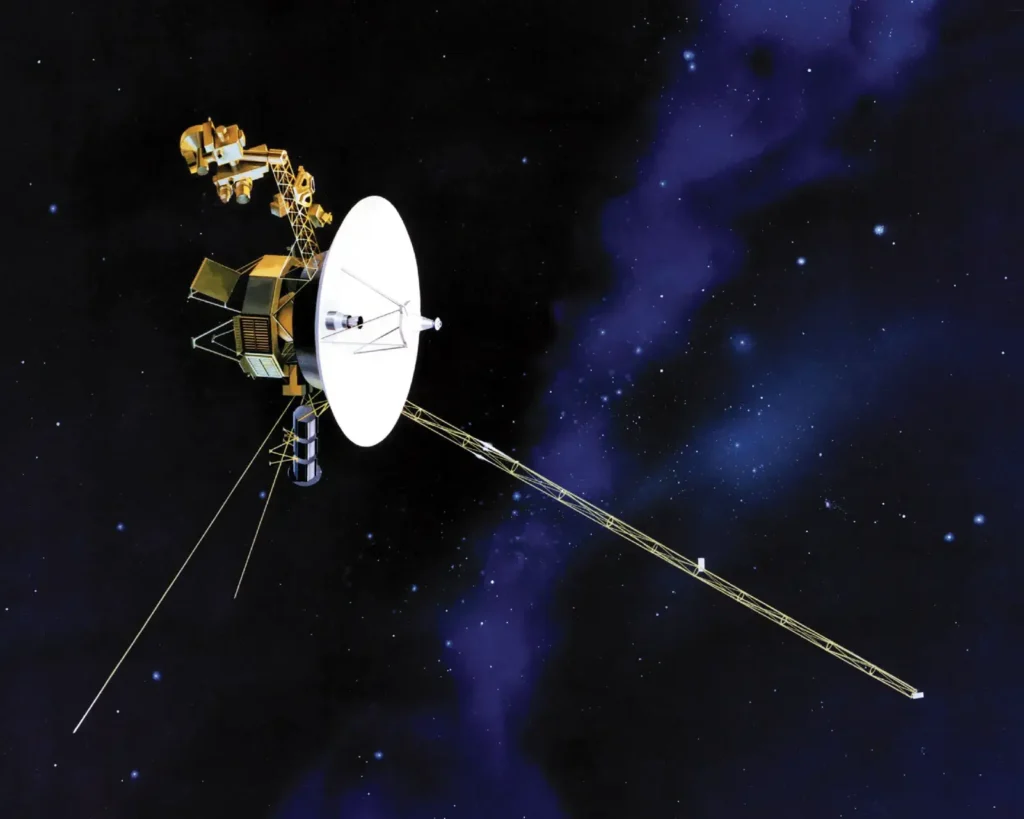Voyager Program
The Voyager Program, initiated by NASA in 1977, sent two robotic probes, Voyager 1 and Voyager 2, on missions to explore the outer planets of the solar system and beyond. Initially designed for a four-year mission, the spacecraft far surpassed expectations, with Voyager 1 becoming the first human-made object to reach interstellar space in 2012. Both Voyagers continue to send data back to Earth, providing insights into the space beyond our solar system.
Each Voyager carries a “Golden Record,” a 12-inch gold-plated disc containing sounds and images intended as a greeting to any extraterrestrial life. The spacecraft’s mission is not just about scientific discovery but also about delivering a message from Earth to the cosmos.
Voyager 1

Voyager 1, launched on September 5, 1977, has provided unprecedented data on Jupiter, Saturn, and their moons. Now over 14 billion miles from Earth, it continues to transmit data from interstellar space. Despite its extreme distance and limited power, Voyager 1 remains functional, making it a remarkable feat of engineering and one of humanity’s most successful space missions.
Communication Problem (October 24, 2024)
On October 24, 2024, NASA detected a communication issue with Voyager 1. The problem was first noticed when data from the spacecraft became garbled and irregular, raising concerns about Voyager 1’s systems. Given the spacecraft’s distance, which results in a 21-hour delay in communication, troubleshooting was challenging. Initial analyses suggested that the issue could be related to Voyager 1’s Attitude Articulation and Control System (AACS), which keeps the antenna aligned with Earth. This system has degraded over time due to the harsh conditions of space, and an error in orientation could prevent accurate data transmission.
How NASA addressed problems in communication ?
To address the issue, NASA’s Voyager team turned to an old transmission protocol last used over 43 years ago. This legacy transmission mode was initially designed to manage low-power, long-distance data relays, making it ideally suited for Voyager 1’s current situation at the edge of interstellar space. The team reconfigured the AACS to use this older protocol, which is more tolerant of delays and interference.
This 43-year-old protocol allowed engineers to bypass potentially degraded systems and restore a stable communication link with Voyager 1. The choice to revert to this legacy mode reflects NASA’s resourcefulness in working with aging technology under extreme conditions, extending Voyager 1’s ability to send data and continue its mission despite almost five decades in space.
This solution not only restored Voyager 1’s communication but also showcased NASA’s commitment to innovation, demonstrating that even legacy technologies can provide modern solutions when adapted creatively to new challenges.
Details in the Articles are collected from trusted Sources you can visit India Today for more details.
